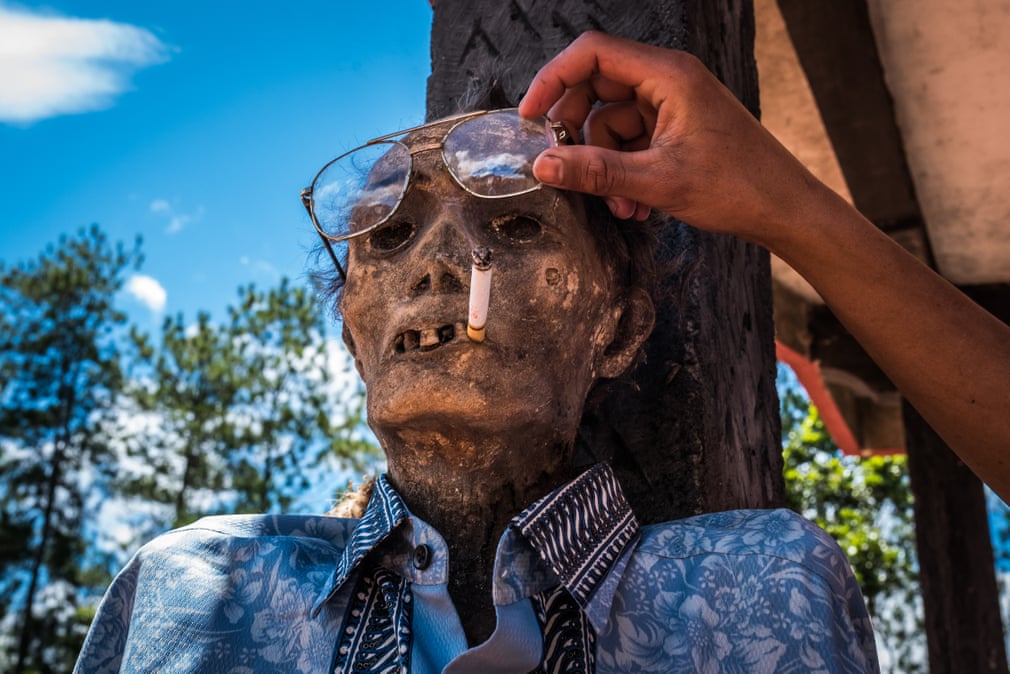A relevant case study: Toraja
Toraja
or the city of the uplands, a lost city located on the depths of Indonesia, more
certainly on a mountainous region called South Sulawesi.
They
keep being untouched by the outside word, always living up to their beliefs,
traditions and most important, their rites. They are the creators of one of the
weirdest and elaborated funeral rituals, one of the main reasons why nowadays
it is known as the “zenit” or, the beginning, of dark tourism.
 |
| ph: National Geographic |
Death
is considered is seen on a daily basis, but, they are used to treat their beloved
relatives as if they are sick, so they are never gone, death doesn’t mean goodbye.
In Toraja is customary to feed the deceased family members every day and to
keep the corpses cozily bedded in a special, the separated room of the family
house, until de family can afford a proper funeral. Torajans, are really humble,
this is one of the main reasons why de funerals are held during the dry season (from
June to November), so poorer families got the possibility of raise enough money,
which would be later used for the acquiring of porks and buffalos, in order to
feed the entire city population. The
ceremony of killing all this animals is really disgusting and morbid, the
animals got killed in front of the entire town, which stays painting with blood
until the funeral ends.
This
funerals may last three days and depending on how wealthy the family of the
death person is, it may actually last ten more days. Bodies are exhumed to be cleaned and dressed
in new clothes every three years in August or Ma´nene, the month of the ceremony
of cleaning corpses. Death for many Torajans is not a brick wall but a veil, a
new type of connection with their loved ones.
It´s
quite curious the fact that, considering their peculiar beliefs, being so far
from the outsiders, and so technologically undeveloped, the citizens still find
their way in order to get mobile phones and, in a way, connect with the world
in their own way. Pictures of Toraja are
quite a few, some of them have started to show after the Netflix documentary “The
other Tourism”. This show got attention of important platforms such as The
Guardian or National Geographic. Due to
the increasing number of visitors, even tough their just a few, citizens get
motivated and find more reasons on keeping their traditions alive. According to
UNESCO, heritage in this city has an “indispensable
scientific value as a source of analogy to study the past” and “the cultural landscape created based on
local wisdoms may bring awareness on the nature-culture relation”.
Toraja won my attention at first sight, even tough I find this ritual quite disturbing and shocking, I also believe is really amazing how different cultures can be, we are talking of traditions from 700 years ago who are still being developed nowadays.


Comentarios
Publicar un comentario